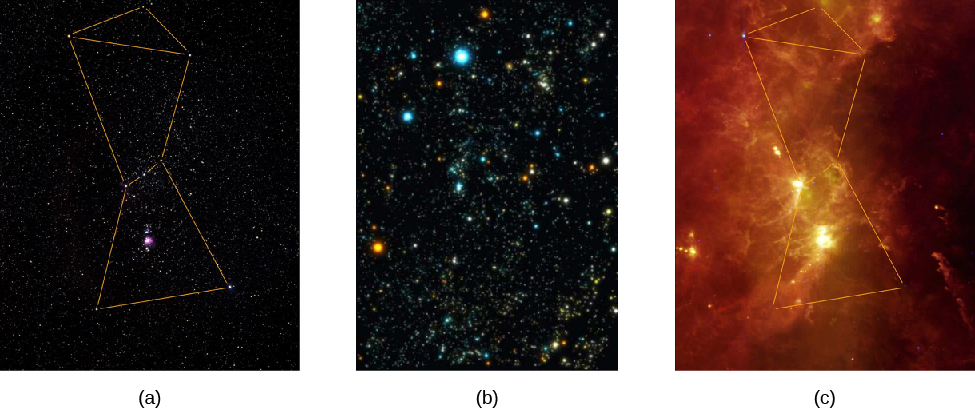4.1 Introduction
There are three basic components of a modern system for measuring radiation from astronomical sources. First, there is a telescope, which serves as a “bucket” for collecting visible light (or radiation at other wavelengths, as shown in Figure 4.1. Just as you can catch more rain with a garbage can than with a coffee cup, large telescopes gather much more light than your eye can. Second, there is an instrument attached to the telescope that sorts the incoming radiation by wavelength. Sometimes the sorting is fairly crude. For example, we might simply want to separate blue light from red light so that we can determine the temperature of a star. But at other times, we want to see individual spectral lines to determine what an object is made of, or to measure its speed . Third, we need some type of detector, a device that senses the radiation in the wavelength regions we have chosen and permanently records the observations.
Orion Region at Different Wavelengths

Attribution
“6.1 Telescopes” from Douglas College Astronomy 1105 by Douglas College Department of Physics and Astronomy, is licensed under a Creative Commons Attribution 4.0 International License, except where otherwise noted. Adapted from Astronomy 2e.

